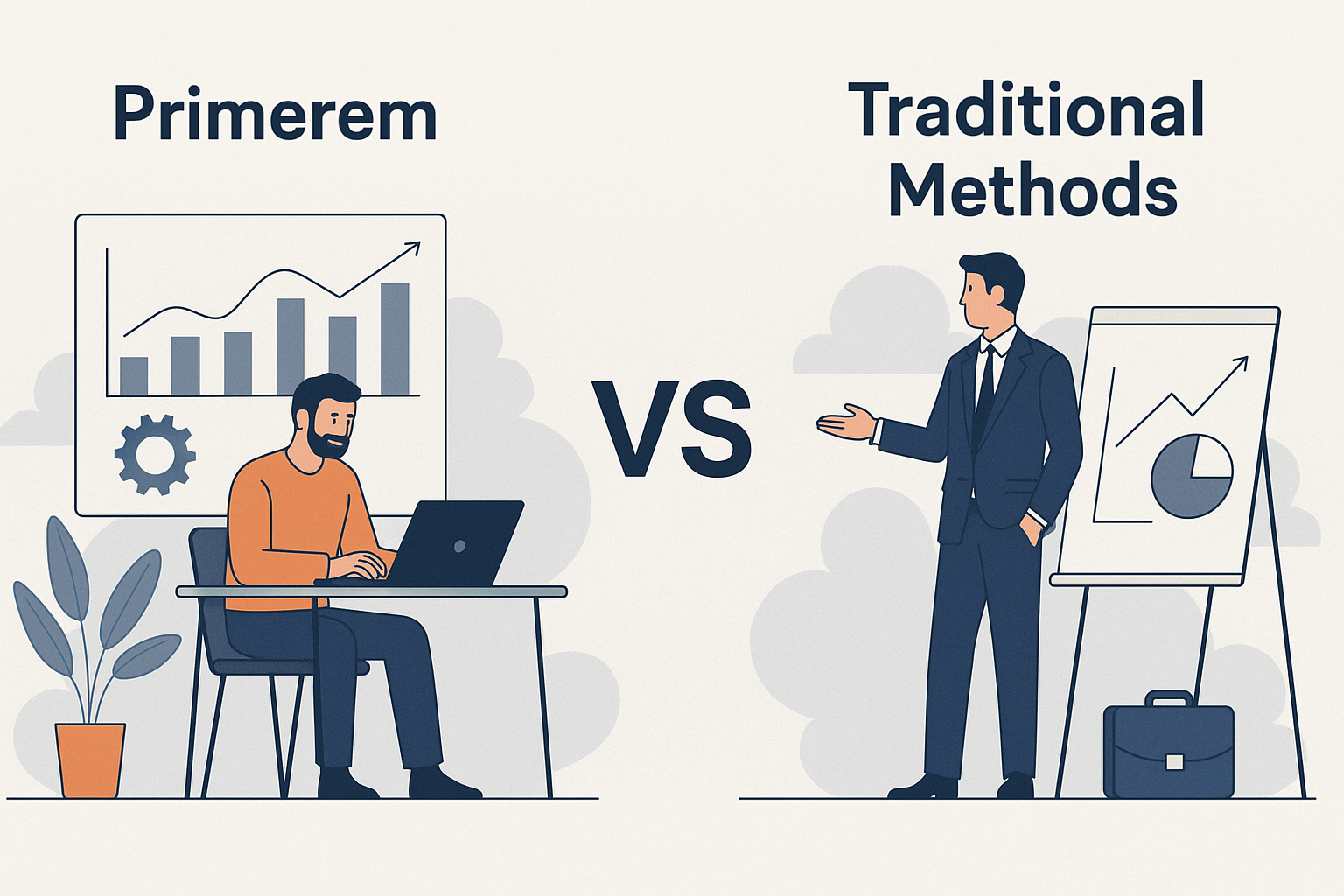Primerem vs Traditional: The Right Choice for Your Business

Introduction
When businesses set out to improve operations, streamline workflows, or boost customer engagement, one of the biggest decisions they face is whether to adopt modern tools or continue with conventional approaches. Primerem has emerged as a contemporary solution designed to bring agility, automation, and data-driven results. In contrast, traditional methods have long been valued for their reliability and personal touch.
The question many business owners ask themselves is: Which is right for my company—Primerem or the tried-and-true traditional strategies? To answer this, it’s important to explore both approaches, their similarities, differences, strengths, and the kinds of scenarios where each shines.
Understanding Primerem and Traditional Methods
At the core, both Primerem and traditional methods share the same purpose—helping organizations achieve desired outcomes efficiently. However, they approach the goal in fundamentally different ways.
-
Primerem relies heavily on digital tools, automation, and real-time data insights. It allows teams to act quickly, adapt to market changes, and improve collaboration across departments.
-
Traditional methods, on the other hand, follow established procedures and long-standing practices. They emphasize consistency and predictability, often making them easier to adopt with minimal training.
The divergence between these two lies mainly in adaptability and resource use. Primerem requires upfront investment in technology and training but rewards businesses with faster returns in efficiency. Traditional methods may involve less initial cost but can struggle to keep up with fast-changing environments.
Advantages of Primerem
Implementing Primerem can bring a wide range of benefits that modern businesses find appealing:
-
Automation of routine tasks – Time-consuming, repetitive work can be automated, reducing human error and freeing employees to focus on high-value activities.
-
Increased productivity – Teams can accomplish more in less time thanks to streamlined workflows.
-
Improved collaboration – Real-time updates keep departments aligned, eliminating miscommunication and delays.
-
Data-driven insights – Primerem provides advanced analytics to guide decision-making, ensuring strategies are based on evidence rather than guesswork.
-
Community support – A growing user base of Primerem adopters makes it easier to share knowledge, solve problems, and innovate collaboratively.
The emphasis on digital transformation makes Primerem particularly suitable for businesses that want to remain competitive in industries where speed and adaptability are critical.
Advantages of Traditional Methods
While Primerem is powerful, traditional methods also hold undeniable value. Many organizations prefer them for the following reasons:
-
Familiarity and stability – Employees often find it easier to adopt processes they already know.
-
Personal connection – Traditional methods, especially in sales or marketing, often involve face-to-face interaction that builds trust and rapport.
-
Effectiveness in specific markets – Certain demographics respond better to traditional channels, such as print media, in-person networking, or word-of-mouth referrals.
-
Long-term relationship building – Traditional practices can foster loyalty that goes beyond digital engagement.
-
Cost efficiency in some cases – While not always the cheapest in the long run, traditional methods may avoid the upfront expenses associated with adopting new technology.
In industries or regions where human interaction is highly valued, traditional approaches continue to perform strongly.
Choosing Between Primerem and Traditional Approaches
Deciding which strategy works best involves evaluating your organization’s unique needs. Consider these factors:
-
Project size and complexity: Larger projects with multiple moving parts may benefit more from the efficiency of Primerem.
-
Budget constraints: Traditional methods can appear cost-effective initially, but ongoing inefficiencies may outweigh those savings. Primerem, while requiring investment, often pays off through long-term productivity gains.
-
Team expertise: If your team is more comfortable with conventional methods, introducing Primerem could require training and adjustment.
-
Urgency of results: Businesses that need quick outcomes may lean toward Primerem for its speed.
-
Industry expectations: Some industries are deeply rooted in tradition, while others reward innovation. Align your method with the norms of your field.
Ultimately, businesses don’t always need to pick one path exclusively. Many find success by blending Primerem with traditional strategies to achieve balance.
Real-World Success Stories
-
Case 1: Primerem in action
A small e-commerce business selling handmade crafts integrated Primerem into its marketing and operations. With automated email campaigns and targeted digital ads, their online sales grew by 150% in just three months. Real-time analytics allowed them to adjust campaigns quickly for maximum return. -
Case 2: Traditional success
A family-owned restaurant leaned heavily on flyers, community events, and word-of-mouth advertising. This traditional approach increased foot traffic significantly during evenings and weekends. Customers appreciated the personal interaction, leading to long-term loyalty.
These examples demonstrate that both strategies can be effective—success depends on context, audience, and business goals.
FAQs About Primerem vs Traditional Methods
Q1: What makes Primerem different from traditional approaches?
Primerem leverages technology, automation, and real-time analytics to optimize processes, while traditional methods focus on established practices, human interaction, and consistency.
Q2: Is Primerem more expensive than traditional methods?
Primerem requires an initial investment in tools and training. However, the efficiency and productivity it delivers often result in faster returns compared to traditional methods.
Q3: Can businesses combine Primerem with traditional practices?
Yes. Many organizations find success by blending both—using Primerem for speed and efficiency while maintaining traditional methods for relationship building and trust.
Q4: Which industries benefit most from Primerem?
Technology, e-commerce, finance, and other fast-moving industries benefit most. However, any organization seeking agility and efficiency can leverage Primerem effectively.
Q5: Are traditional methods outdated?
Not necessarily. Traditional methods still deliver strong results in industries and communities where personal connection and familiarity are essential. They remain relevant when applied strategically.
Conclusion
The choice between Primerem and traditional methods is not about deciding which is universally better—it’s about what works for your business. Primerem offers speed, scalability, and powerful data-driven insights, making it ideal for companies embracing innovation. Traditional methods provide trust, reliability, and personal connection, which remain valuable in many contexts.
Rather than seeing these approaches as opposites, consider how they might complement each other. By adopting Primerem where efficiency matters most and keeping traditional methods where relationships play a central role, you can craft a strategy that maximizes growth and long-term success.
Read also: Kicksta Reviews 2025: The Ultimate Guide to Authentic Instagram Growth

